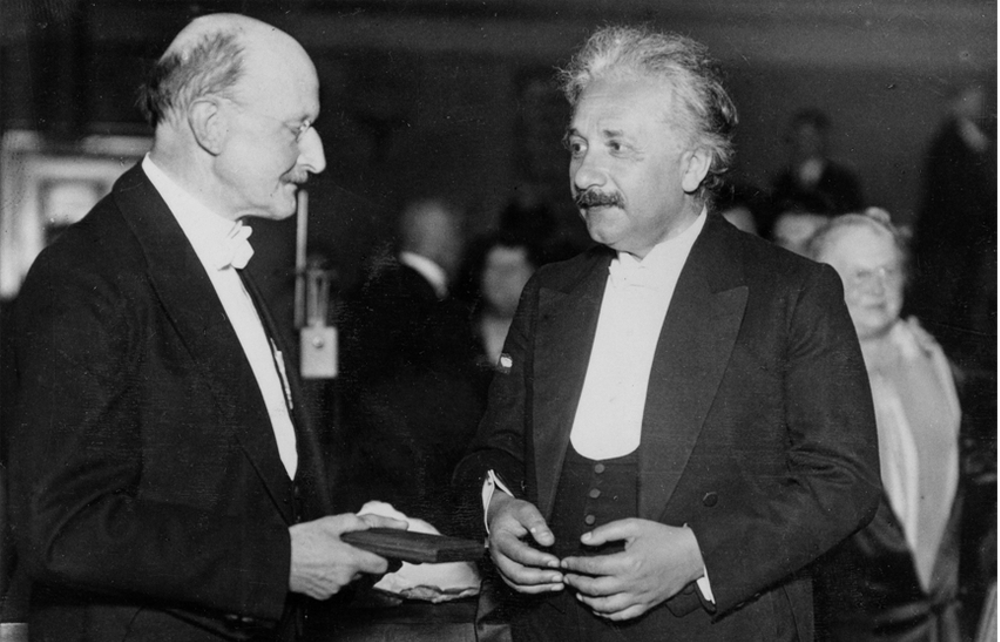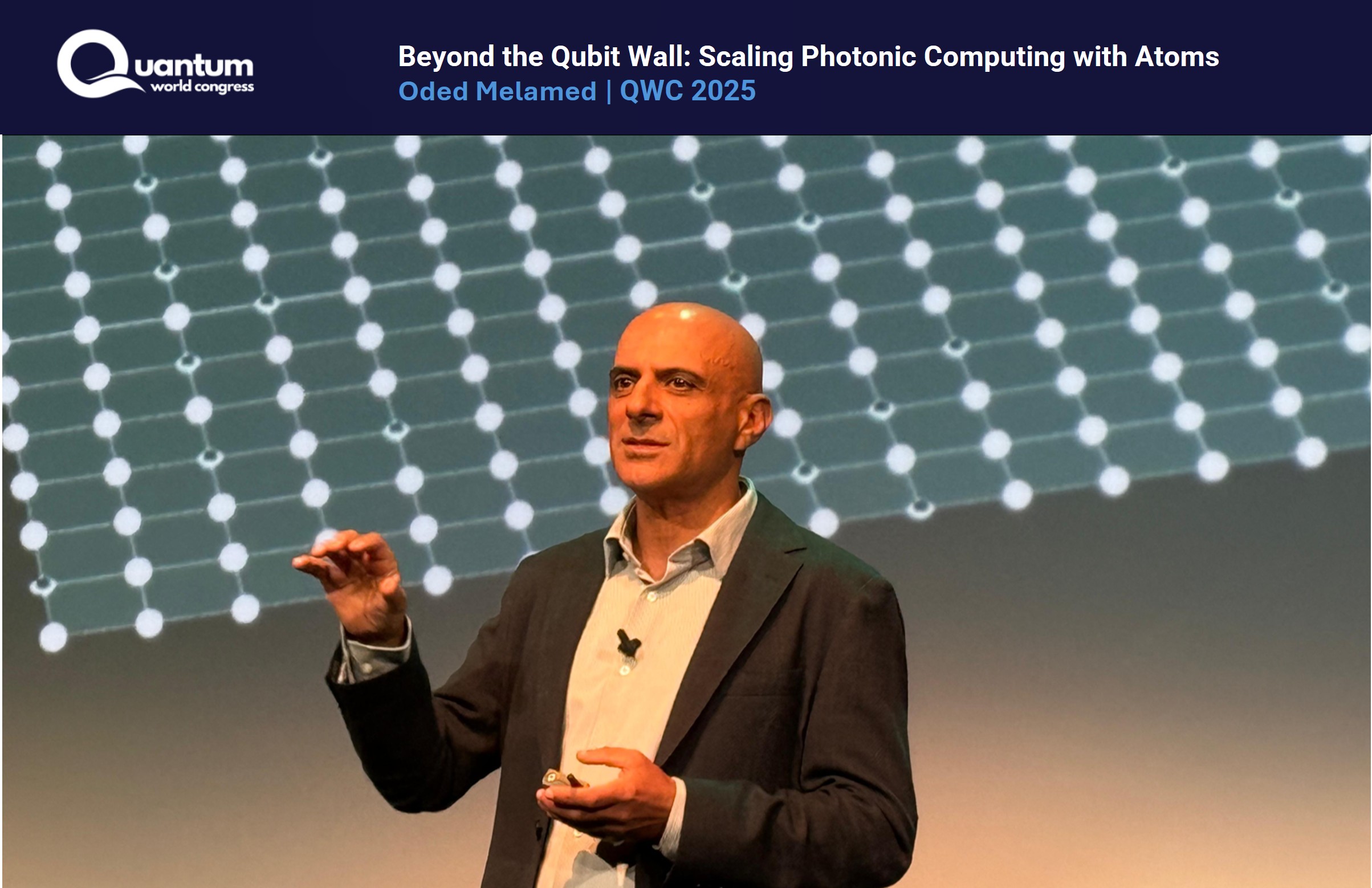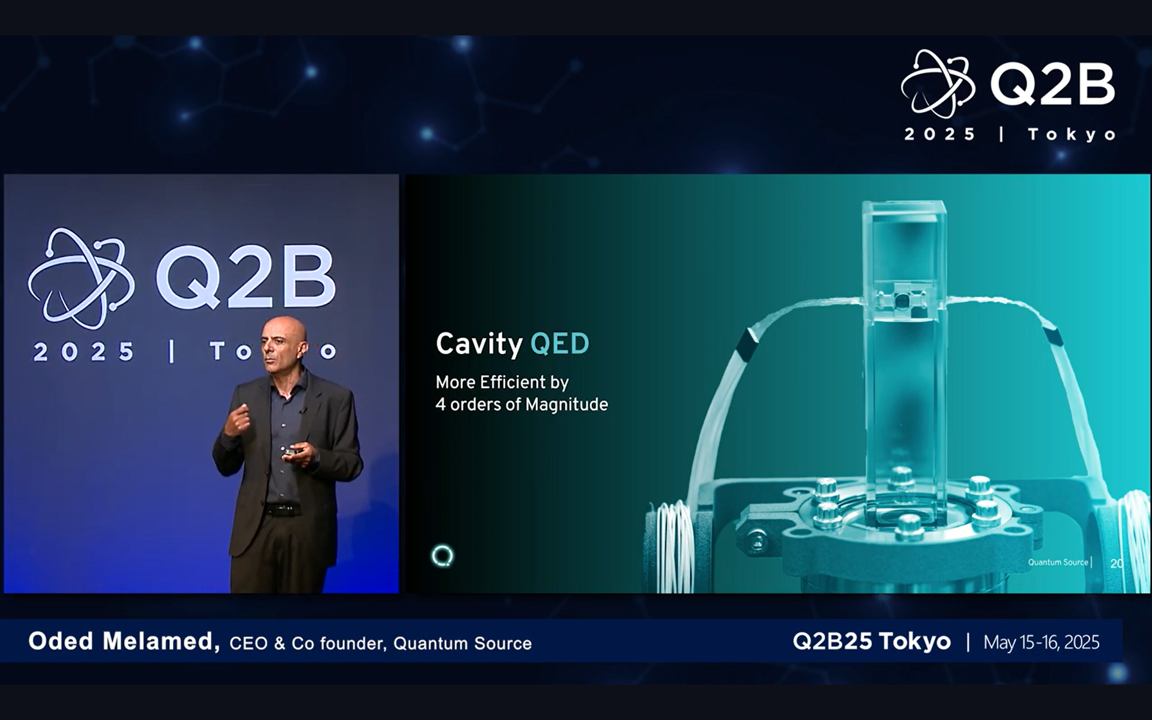
Finally, treating photons like particles
At the dawn of the 20th century, two of Mankind's greatest minds, Max Planck and Albert Einstein, changed the world's view on the nature of light, in what is today regarded as the birth of Quantum Physics.
First, in 1900, Max Planck demonstrated that the Blackbody Radiation can only be explained by assuming that light is emitted in discrete units of energy (“quanta”) [1].
While Planck considered his own assumption as a mere mathematical tool to derive the correct answer, his result intrigued Einstein, who believed it reflected an actual, fundamental physical reality.
Five years later, Einstein presented more evidence, including the photoelectric effect, that indeed light is a stream of energy quanta [2]. Although the name "photon" was coined for these energy quanta only in 1926 [3], Einstein said already in 1905 that light "looks like particles". The experimental proof, though, arrived more than 70 years later.
While many refer to the photoelectric effect as the experimental proof of the existence of the photon, this effect actually reflects the discreteness, or indivisibility, of the electron, not of the photon. What is today regarded as the first experimental evidence of the indivisibility of the units of energy of light, and therefore of the existence of the photon, is actually the antibunching experiment of Kimble and Mandel in 1977 [4].
This experiment showed that when light is emitted from single atoms at short time scales it cannot be divided into two detectors. This effect was demonstrated again 30 years later in a much cleaner setting, by using single atoms next to a fiber-coupled photonic chip [5]. In fact, this is the first version of the same technology harnessed by Quantum Source today.
![Top: a single atom coupled to a chip-based ring resonator. Bottom: the probability of detecting two photons at the output of the fiber drops to zero on short time scales, showing the indivisibility of the single photons emitted from the atom (adopted from [5]).](https://cdn.prod.website-files.com/6571796753527fed75140982/66c5ebc23eb6d9fe274750ca_65b2a21d6d09bfc3cd4e02d1_unnamed%2520(2).png)
Deterministic photon-atom interaction
The experiment reported in Nature Photonics 2016 [6] follows the footsteps of these fundamental demonstrations. For the first time, scientists have been able to deterministically "pick-out", or extract, exactly a single photon from a regular, classical laser pulse, which inherently contains a statistical distribution of multiple photons.
As reported in detail in the paper, the experimental setup consisted of fiber-coupled chip-based resonators to which single 87Rb atoms were coupled in a special 3-level configuration. This configuration of levels leads to an effect called Single-Photon Raman Interaction (SPRINT) [7], in which the atom deterministically reflects only one photon, and at the same time flips its own state to the other ground state, at which it is no longer interacting with the incoming light.
The result, as shown in Figure 2 below, is that no matter how many photons on average are in the incoming pulse (the x axis), the atom reflects only 1 photon, if such exists in the pulse (red line), and leaves all the rest to continue (blue curve).

This mechanism works as a "quantum filter" in some sense: in comes a classical pulse, most of it continues on, except for a single photon that is reflected back - a pulse that is no longer classical but as quantum as it goes - a single photon pulse. As such, the demonstration of this mechanism bears significance far beyond its scientific novelty. In fact, atom sites performing single-photon extraction play a vital role in Quantum Source's architecture that is based on deterministic generation of photons and entangling gates.
[1] M. Planck, Annalen der Physik 309, 553 (1901)
[2] A. Einstein, Annalen der Physik 6, 132 (1905)
[3] Lewis Gilbert Newton, Nature 118, 874 (1926)
[4] H. J. Kimble, M. Dagenais, and L. Mandel, Physical Review Letters 39, 691 (1977)
[5] B. Dayan, A.S. Parkins, T. Aoki, E. Ostby, K.J. Vahala and H.J. Kimble, Science 319, 1062 (2008)
[7] S. Rosenblum, A. Borne, and B. Dayan, Physical Review A 95, 033814 (2017)
categories
popular

P-Atom-Mediated Deterministic Generation and Stitching of Photonic Graph States
How single atoms can solve the most demanding challenge in photonic quantum computation: deterministic generating of graph states

P-A passive photon-atom qubit SWAP gate
The first experimental demonstration of a qubit SWAP gate between two different types of qubits.
Similar
popular

V-Quantum Frontiers: National Strategy, Global Impact
At QWC 2025, former Prime Minister of Israel and Quantum Source Board Member Naftali Bennett joined Preston Dunlap, former inaugural CTO and Chief Architect of the U.S. Space Force & Air Force and founder of Arkenstone Ventures, for a timely discussion on how nations and companies can navigate the pivot from promise to practical quantum capability.

V-Beyond the Qubit Wall: Scaling Photonic Computing with Atoms
At QWC 2025, Quantum Source laid out how photonics could leap from probabilistic lab demos to room-temperature, fault-tolerant systems. In a tightly argued talk, CEO Oded Melamed described a hybrid approach that couples single photons with single atoms on one platform, aiming to make resource-state generation deterministic and compact enough for a standard server room.

V-Making Photonic Quantum Computation Scalable Using Single Atoms
At Q2B Tokyo 2025, our CEO Oded Melamed presented “Making Photonic Quantum Computation Scalable Using Single Atoms,” explaining how our photonic-based approach addresses key challenges to enable scalable quantum computing.
popular

N-Quantum Source Delivers Practical Photonic Quantum Computing
In this Forbes exclusive interview, published just ahead of Quantum World Congress, Gil Press highlights how Quantum Source’s atom-photon technology is paving the way toward scalable, fault-tolerant photonic quantum computing.

N-Quantum Source Unveils ‘ORIGIN’ - A Noval Core Engine For Scalable, Fault-Tolerant Photonic Quantum Computers
ORIGIN’s vision and concept will be presented at the Quantum World Congress (QWC) in Washington, D.C. on September 17, 2025, in a keynote session featuring Former Israeli Prime Minister Naftali Bennett, a member of the company’s Board, and Quantum Source Co-Founder and CEO Oded Melamed.

N-Exclusive: Prof. Barak Dayan on Quantum Source’s Photon-Atom Breakthrough in Quantum Computing
In this TQI exclusive interview, Prof. Barak Dayan, Chief Scientist at Quantum Source, shares how their photon-atom technology is tackling some of the toughest challenges in quantum computing.




